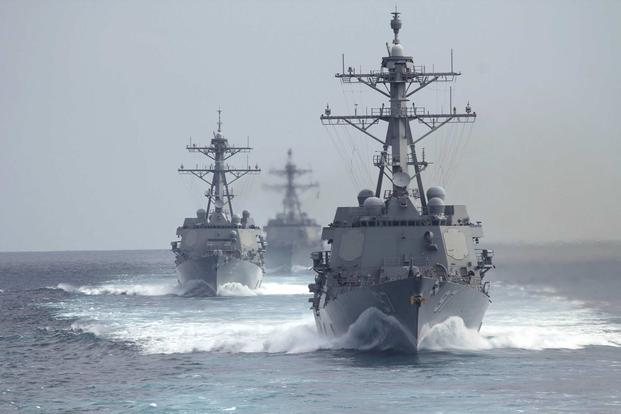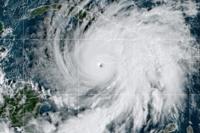The Navy is taking a big step toward keeping some of its aging destroyers in the fight, with plans to outfit them with new radar systems that are better equipped to detect air threats.
Raytheon is working on a variant of its SPY-6 radar system for the Navy's Flight IIA destroyers, company officials said. The technology will provide an upgrade for the destroyers, which could see their service lives extended significantly as the Navy works toward building a 355-ship fleet.
Arleigh Burke-class destroyers currently run the SPY-1D radar system. But potential adversaries are developing new anti-ship missiles that reportedly travel six times the speed of sound and maneuver to avoid detection, likely prompting the push for the upgrade. Defense News first reported the switch.
The Navy will begin procuring the SPY-6 variant in 2022, said Scott Spence, director of naval radar systems with Raytheon.
"We are working with the Navy to accelerate this schedule," he added.
The SPY-6 variant that will be used on the Flight IIAs is the same system Raytheon developed for Flight III DDGs, but it'll "be scaled to the existing size, weight and power available on that ship class," Spence said.
No further development is required for the retrofit, he added.
"SPY-6 delivers true integrated air and missile defense, the ability to simultaneously handle air and missile defense missions," Spence said. "It also enables the detection of threats at significantly greater distances. SPY-6 radars also reduce life cycle costs due to their high reliability and ease of maintenance."
A Navy official told Defense News the first SPY-6 will be installed on a Flight IIA destroyer in fiscal 2025, and the specific hull would be named later. Plans for the Navy's 355-ship fleet call for extending destroyers' service life to 45 years.
SPY-6, according to Raytheon, is the Navy's "first truly scalable radar." The radar is built with individual building blocks called Radar Modular Assemblies, each of which fits in a 2-foot-by-2-foot box. The RMAs can be stacked, depending on the requirements of the ship.
It's also built to be reprogrammable, so it can respond to a new mission or threat. The system can scan 360-degrees using gallium nitride technology to detect air threats.
"It is anticipated that the Flight IIA SPY-6 radar will contain 24 RMAs versus the 37 RMAs (per radar face) on the Flight III," Spence said. "It will have the same functionality, with scaled sensitivity based on the size of the radar.
"This will provide a significant leap forward in capability versus the legacy radar on the Flight IIAs," he added.
-- Gina Harkins can be reached at gina.harkins@military.com. Follow her on Twitter @ginaaharkins.










